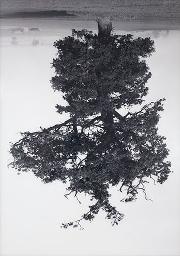Rodney Graham
Rodney Graham was a Canadian printmaking artist.
Based on ArtValue.ca records, Rodney Graham's estimated art value is CAD $100,000 (*)
Rodney Graham's work could be available for sale at public auction with prices in the range of CAD $25,000 - $250,000, or even much higher.
ArtValue.ca has 18 auction art sale records for their print results, with prices in the range of CAD $25,000 - $250,000.
Notable Art Works
Born and schooled in British Columbia, Rodney Graham is an artist, filmmaker and musician who lives and works in Vancouver. He is widely acknowledged as an innovator whose work has reshaped the nature of contemporary photo-based art. Graham, along with his lifelong esteemed colleagues, developed an approach referred to as photo-conceptualism. Their enduring impact has led to them being referred to collectively as the Vancouver School. Graham’s photo images are often witty, humorous and uncanny. This posture has led to his work being included in a staggering number of the most significant international exhibitions and avidly collected by prestigious world art museums. Paradoxically, Graham does not consider himself to be a photographer. He reports that he does not even own a camera. Instead, akin to a film director or architect, Graham envisages the desired outcome and works with others to achieve the result. Some of his most celebrated early work, commencing in 1979, employed a unique adaptation of the camera obscura. If one passes light through a pinhole into a darkened room, then a sharply focused image appears on the adjacent wall. This phenomenon has been known and used by scientists for centuries. Many artists, most famously Johannes Vermeer, adapted the technology to act as a drawing aid to help achieve perfectly proportioned, highly realistic paintings. The camera obscura, or pinhole camera, is the elemental technology that led to the evolution of both still photography and motion pictures. The initial step was to allow the upside-down pinhole image to expose either a photosensitive paper or negative. Once complete, the image would simply be turned “right side” up. Graham’s fascination with the camera obscura led him to display his pictures inverted, just as the camera created them. He has used this technique to capture a range of subjects. However, unquestionably his signature image has been a lone, inverted, isolated oak tree. The selection should give us pause to wonder: why an oak? After all, Canada’s emblem is the maple; and Canadian art history is replete with images of solitary pine trees. Graham, as a resident of Vancouver, is constantly surrounded by trees of all species in parklands and wilderness, and they are ever present on the urban horizon. The mighty Douglas fir is perhaps most responsible for the historical influx of new inhabitants to work in the lumber industry, and the tourism industry has long branded the province as Super, Natural British Columbia. Graham’s art seems to not want any part of the expected nationalist, romantic, symbolic messaging. Instead of following the example of Henry David Thoreau’s return to a simpler ascetic life spent alone with nature, he looked to Europe. Graham’s works picture trees primarily from England and Europe. Just as he returns to the rudiments of black and white photography, his oaks recall some of the first uses of the tree as the principal element of an artwork. The tree is not just a backdrop or accompaniment to a historical narrative or a compositional prop, but is instead the central “character” in an artwork. Notably one thinks of Rembrandt van Rijn’s De drie bomen (1643), Gustave Courbet’s great oak in The Oak of Flagey (1864) and countless paintings of majestic, stolid oak trees by Barbizon School artists. As mentioned, Graham has been recognized by his inclusion in the most influential exhibitions of international contemporary art, including documenta IX (1992), the Whitney Biennial (2006), and the Carnegie International (2013), and he has had solo exhibitions at the Vancouver Art Gallery, the Art Gallery of Ontario and the Museum of Contemporary Art, Los Angeles (2004), among many others. Graham represented Canada at the 47th Venice Biennale in 1997. He is the recipient of many international awards - among them the Gershon Iskowitz Prize (2004), the Kurt Schwitters Prize (2006) and the Audain Prize for Lifetime Achievement in the Visual Arts (2011). He was appointed an officer of the Order of Canada in 2016. Graham’s work is in the collection of the Centre Georges Pompidou in Paris and the Metropolitan Museum of Art and the Museum of Modern Art in New York. Five of his inverted tree works are in the collection of the Whitney Museum of American Art, including Oxfordshire Oak, Swalcliffe, a work the museum lists as a unique image. Our work is the same image in a different size and is an Artist’s Proof. We thank Jeffrey Spalding for contributing the above essay. Spalding is an artist, curator, author and educator. For more than 40 years, Spalding has served in leadership roles at art museums and educational institutions. He is a member of the Order of Canada. Accompanying this lot is a letter of authentication signed by Rodney Graham and dated October 11, 2002.
